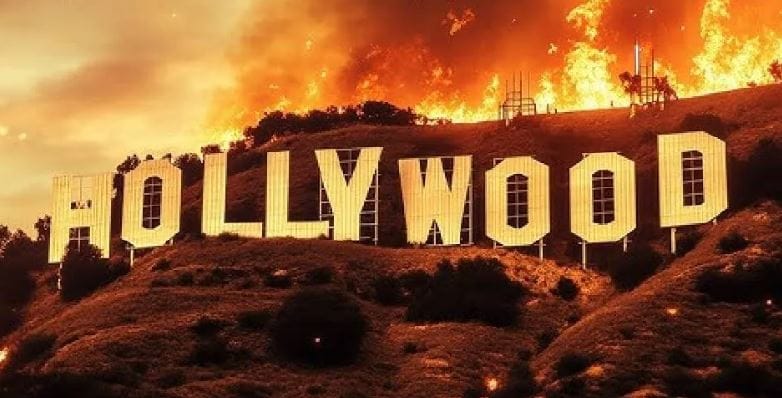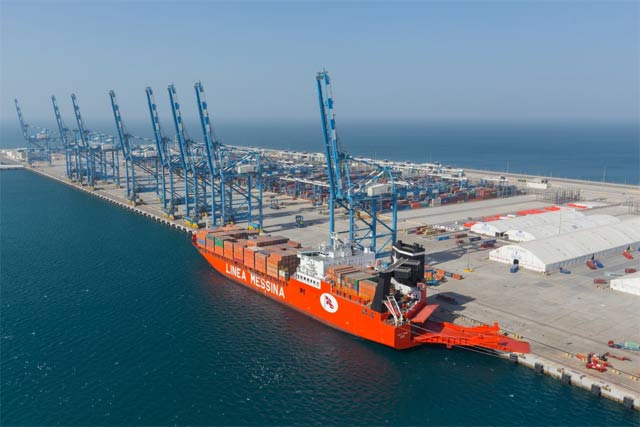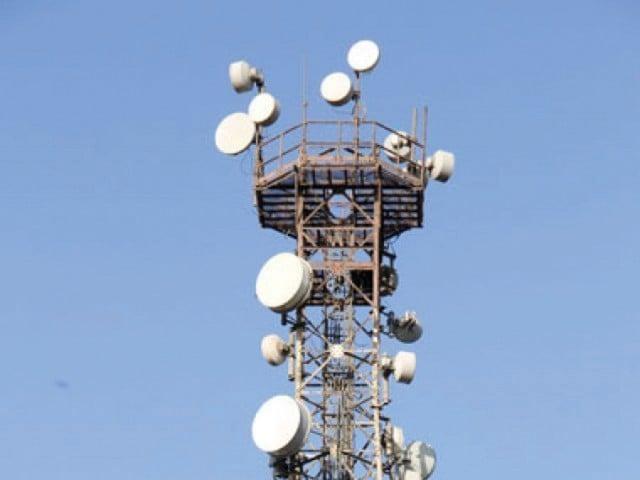The California Crossfires
Los Angeles has once again become the epicenter of a national firestorm, as immigration enforcement, civil unrest, and federal-state tensions converge in a volatile confrontation that started with the Wildfires and now on Immigration.

Los Angeles has once again become the epicenter of a national firestorm, as immigration enforcement, civil unrest, and federal-state tensions converge in a volatile confrontation that started with the Wildfires and now on Immigration.
WildFires
In January 2025, Los Angeles was once again consumed—this time not by protest or pandemic, but by fire. Twin infernos, the Palisades Fire and the Eaton Fire, tore through neighborhoods, killed 18, and triggered mass evacuations. As the flames spread, so did political tension—revealing the cracks in America's federal system when it comes to crisis response.
Behind the scenes of firefighting heroism and community resilience, a constitutional standoff played out between California Governor Gavin Newsom and President Donald Trump—over funding, military deployment, water control, and the fundamental question: who really holds the reins in a national emergency?
The Fires: Timeline and Destruction
- January 7, 2025: High winds and downed power lines ignited the Palisades and Eaton fires.
- Eaton Fire: Became one of the most destructive in California history:
- 14,021 acres scorched
- 9,400+ structures destroyed
- 18 lives lost, 100,000 evacuated
- Estimated $28 to $54 billion in total damage
The fires moved swiftly through canyons and communities, overwhelming local firefighting capacity despite rapid deployment.
California’s Response
Governor Newsom declared a state of emergency within 24 hours under California’s Emergency Services Act. Key actions included:
- Mobilizing Cal Fire, CHP, and local firefighting units.
- Fast-tracking housing permits and emergency shelter resources.
- Declaring a $2.5 billion relief package through a special legislative session.
- Initiating large-scale brush clearance operations statewide to reduce future risk.
But the effort was shadowed by controversy. LA Mayor Karen Bass was criticized for her delayed return to the city and prior budget cuts to the LAFD, eventually resulting in the removal of the LA Fire Chief.
Federal Intervention: Cooperation or Coercion?
President Trump responded with a Major Disaster Declaration on January 8, triggering federal assistance through the Stafford Act. Federal contributions included:
- 100% firefighting cost coverage for 180 days
- Deployment of over 400 firefighters, National Guard units, and Navy helicopters
- FEMA coordination of shelters, food, and debris management
- EPA’s largest wildfire hazardous waste cleanup, including battery acid, asbestos, and chemical contamination
However, tension quickly surfaced:
- GOP legislators threatened to condition federal aid on water infrastructure and immigration policy concessions.
- Trump issued an executive order forcing the Army Corps of Engineers to release dam water to combat fire risk—California officials objected, claiming it risked flood mismanagement and sidestepped state water rights.
Constitutional Crossfire: Legal & Political Breakdown
| Conflict | California's Position | Federal Position | Legal Context |
|---|---|---|---|
| Disaster declaration authority | Governor declares state emergency | President declares national disaster | 10th Amendment, Stafford Act |
| Water management | State controls water infrastructure | Federal Corps directed to override | Reserved powers, water rights |
| Aid conditions | No political strings on relief funds | GOP-linked provisions tied to border security & fuel policy | Spending Clause, separation of powers |
| Environmental regulations | Fast-tracked state rules on clearing | Federal environmental waivers imposed | EPA authority vs. state prerogatives |
California Attorney General Rob Bonta indicated legal action would be taken if federal conditions were attached to relief disbursements—calling such actions “a violation of state sovereignty”.
Root Causes & Prevention Failures
While climate conditions—extreme drought and Santa Ana winds—amplified the fires, structural failures played a role:
- Aging utility infrastructure: Suspected ignition from Southern California Edison lines raises questions of corporate negligence.
- Insufficient brush management: Despite prior warnings, fire-prone zones had not been cleared.
- Urban-wildland interface growth: Zoning and development patterns continue to push communities into risk zones without hardened defenses.
Next Steps and Policy Outlook
- Recovery & Rebuilding: FEMA and EPA continue clean-up; federal mortgage, tax, and housing relief programs are underway.
- Water Rights Litigation: Ongoing disputes between state and federal agencies may head to the Supreme Court if not settled through executive negotiation.
- Utility Reform: Lawsuits and legislative hearings targeting power companies are already mounting.
- Disaster Preparedness Legislation: Both state and federal lawmakers are expected to introduce new fire prevention bills this summer.
- Public Trust Rebuilding: Transparency in spending, oversight, and disaster readiness will be critical to regaining voter confidence—especially heading into the 2026 midterms.
The January 2025 wildfires were more than a natural disaster—they were a constitutional stress test. The tension between California’s progressive governance and federal oversight under a conservative White House reignited longstanding debates over federalism, executive power, and the role of government in climate adaptation.
As climate extremes grow more common, so too will these legal confrontations. Whether Washington and Sacramento can cooperate, or continue to clash in the courts and the press, may define the future of disaster governance in 21st-century America.
Immigration
What began as community protests against aggressive workplace immigration raids by ICE rapidly escalated into citywide unrest—sparking constitutional debates, legal challenges, and the federal deployment of military forces.
At the heart of the issue: the balance of power between state and federal authorities, and the rights of both citizens and non-citizens in times of civil disruption.
The Spark: Immigration Raids and Community Response
The unrest was ignited by a series of high-profile ICE raids that began on June 6 across Southern California, targeting undocumented workers in coordination with the Department of Justice. Many of those arrested were longtime residents with deep community ties. The operations drew immediate condemnation from immigrant advocacy groups, unions like SEIU, and local officials.
When protests turned violent in downtown LA—marked by looting, property destruction, and confrontations with law enforcement—the stage was set for a dramatic federal response.
Federalization and the Role of the National Guard
President Trump, citing federal law under Title 10 and 10 U.S. Code § 12406, deployed approximately 2,000 National Guard troops and 700 active-duty Marines to LA—without the consent of California Governor Gavin Newsom. It marked the first such move in decades.
Governor Newsom called the deployment unconstitutional and filed a federal lawsuit challenging it, asserting that such unilateral action undermines state sovereignty and violates the separation of powers. Civil rights groups have rallied behind the Governor, warning of a dangerous precedent.
Historically, National Guard deployments like those during the 1992 Rodney King riots were done at the request of the governor. In this case, the federalization occurred over state objection.
Civil Liberties and Constitutional Tensions
The protests brought to the surface a host of constitutional issues:
- First Amendment: Protesters’ rights to free speech and assembly were challenged as police declared “unlawful assemblies” and used force—including rubber bullets and tear gas—to disperse crowds. Multiple journalists were injured, raising questions about press freedoms.
- Fifth & Fourteenth Amendments: Immigration activists argue that the raids and detentions violate due process protections, especially for those with pending asylum or work claims.
- Tenth Amendment: California’s “sanctuary state” policies are grounded in the belief that the federal government cannot compel state agencies to enforce federal immigration law. LAPD reiterated they are not coordinating with ICE—a position now caught in the crossfire of federal mandates and executive orders.
The Legal Justification and Its Critics
The Trump administration claims that federal action is justified to:
- Protect federal properties and ICE personnel under threat.
- Restore law and order where local enforcement is allegedly overwhelmed.
- Enforce federal immigration statutes amidst resistance from local jurisdictions.
Critics, including legal scholars and civil rights groups, argue that these reasons fall short of the constitutional threshold required for military deployment. The ACLU noted that invoking laws meant for actual insurrection or rebellion against peaceful (albeit tense) civil protests risks weaponizing federal power against dissent.
Historical Parallels
- 1992 LA Riots: Then-Gov. Pete Wilson requested federal troops after the Rodney King verdict protests turned violent. President H.W. Bush deployed the military under the Insurrection Act, with clear state cooperation.
- 1965 Selma Marches: President Lyndon B. Johnson federalized Alabama’s National Guard without the governor’s consent—but this was to protect peaceful civil rights marchers, not suppress unrest.
- 2007 MacArthur Park Clash: LAPD’s excessive force against immigrant-rights protesters resulted in millions in settlements and reforms—demonstrating the long-term fallout of mishandling civil demonstrations.
Executive Powers in Crisis: What Should Be Done?
Both the President and Governors hold defined but limited authority during emergencies.
- The President may deploy federal forces in case of rebellion or law enforcement failure—but must tread carefully to avoid infringing civil rights or trampling state sovereignty.
- Governors are the commanders-in-chief of their state’s National Guard under Title 32, unless properly federalized under constitutional conditions.
The current standoff poses deep legal questions: What defines a sufficient breakdown in order? Can immigration enforcement justify federal troop use? Who decides when federal authority overrides state consent?
America at a Crossroads
The LA unrest is not just a local or immigration issue—it is a stress test for the American constitutional system. The outcome of Gov. Newsom’s legal challenge and the national response will likely shape the future of federal-state relations, immigration enforcement, civil liberties, and protest rights for years to come.
In a democracy, the balance between public safety and constitutional freedoms must be preserved, even in moments of chaos. How that balance is struck now will determine whether we move forward—or fracture further.











